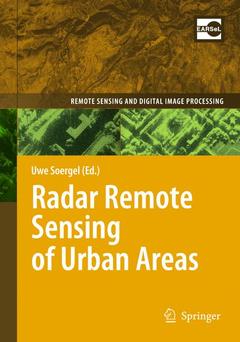1 Review of Radar Remote Sensing on Urban Areas Uwe Soergel 1.1 Introduction 1.2 Basics 1.3 2d Approaches 1.4 3d Approaches 1.5 Surface Motion 1.6 Moving Object Detection References 2 Rapid Mapping Using Airborne and Satellite SAR Images Fabio Dell’Acqua and Paolo Gamba 2.1 Introduction 2.2 An Example Procedure 2.3 Examples on Real Data 2.4 Conclusions References 3 Feature Fusion Based on Bayesian Network Theory for Automatic Road Extraction Uwe Stilla and Karin Hedman 3.1 Introduction 3.2 Bayesian Network Theory 3.3 Structure of a Bayesian Network 3.4 Experiments 3.5 Discussion and Conclusion References 4 Traffic Data Collection with TerraSAR-X and Performance Evaluation Stefan Hinz, Steffen Suchandt, Diana Weihing, and Franz Kurz 4.1 Motivation 4.2 SAR Imaging of Stationary and Moving Objects 4.3 Detection of Moving Vehicles 4.4 Matching Moving Vehicles in SAR and Optical Data 4.5 Assessment 4.6 Summary and Conclusion References 5 Object Recognition from Polarimetric SAR Images Ronny H¨ansch and Olaf Hellwich 5.1 Introduction 5.2 SAR Polarimetry 5.3 Features and Operators 5.4 Object Recognition in PolSAR Data 5.5 Concluding Remarks References 6 Fusion of Optical and SAR Images Florence Tupin 6.1 Introduction 6.2 Comparison of Optical and SAR Sensors 6.3 SAR and Optical Data Registration 6.4 Fusion of SAR and Optical Data for Classification 6.5 Joint Use of SAR Interferometry and Optical Data for 3D Reconstruction 6.6 Conclusion References 7 Estimation of Urban DSM from Mono-aspect InSAR Images Celine Tison and Florence Tupin 7.1 Introduction 7.2 Review of Existing Methods for Urban DSM Estimation 7.3 Image Quality Requirements for Accurate DSM Estimation 7.4 DSM Estimation Based on a Markovian Framework 7.5 Conclusion References 8 Building Reconstruction from Multi-aspect InSAR Data Antje Thiele, Jan Dirk Wegner, and Uwe Soergel 8.1 Introduction 8.2 State-of-the-Art 8.3 Signature of Buildings in High-Resolution InSAR Data 8.4 Building ReconstructionApproach 8.5 Results 8.6 Conclusion References 9 SAR Simulation of Urban Areas: Techniques and Applications Timo Balz 9.1 Introduction 9.2 Synthetic Aperture Radar Simulation Development and Classification 9.3 Techniques of SAR Simulation 9.4 3D Models as Input Data for SAR Simulations 9.5 Applications of SAR Simulations in Urban Areas 9.6 Conclusions References 10 Urban Applications of Persistent Scatterer Interferometry Michele Crosetto, Oriol Monserrat, and Gerardo Herrera 10.1 Introduction 10.2 PSI Advantages and Open Technical Issues 10.3 Urban Application Review 10.4 PSI Urban Applications: Validation Review 10.5 Conclusions References 11 Airborne Remote Sensing at MillimeterWave Frequencies Helmut Essen 11.1 Introduction 11.2 Boundary Conditions for Millimeter Wave SAR 11.3 The MEMPHIS Radar 11.4 Millimeter Wave SAR Processing for MEMPHIS Data References Index





